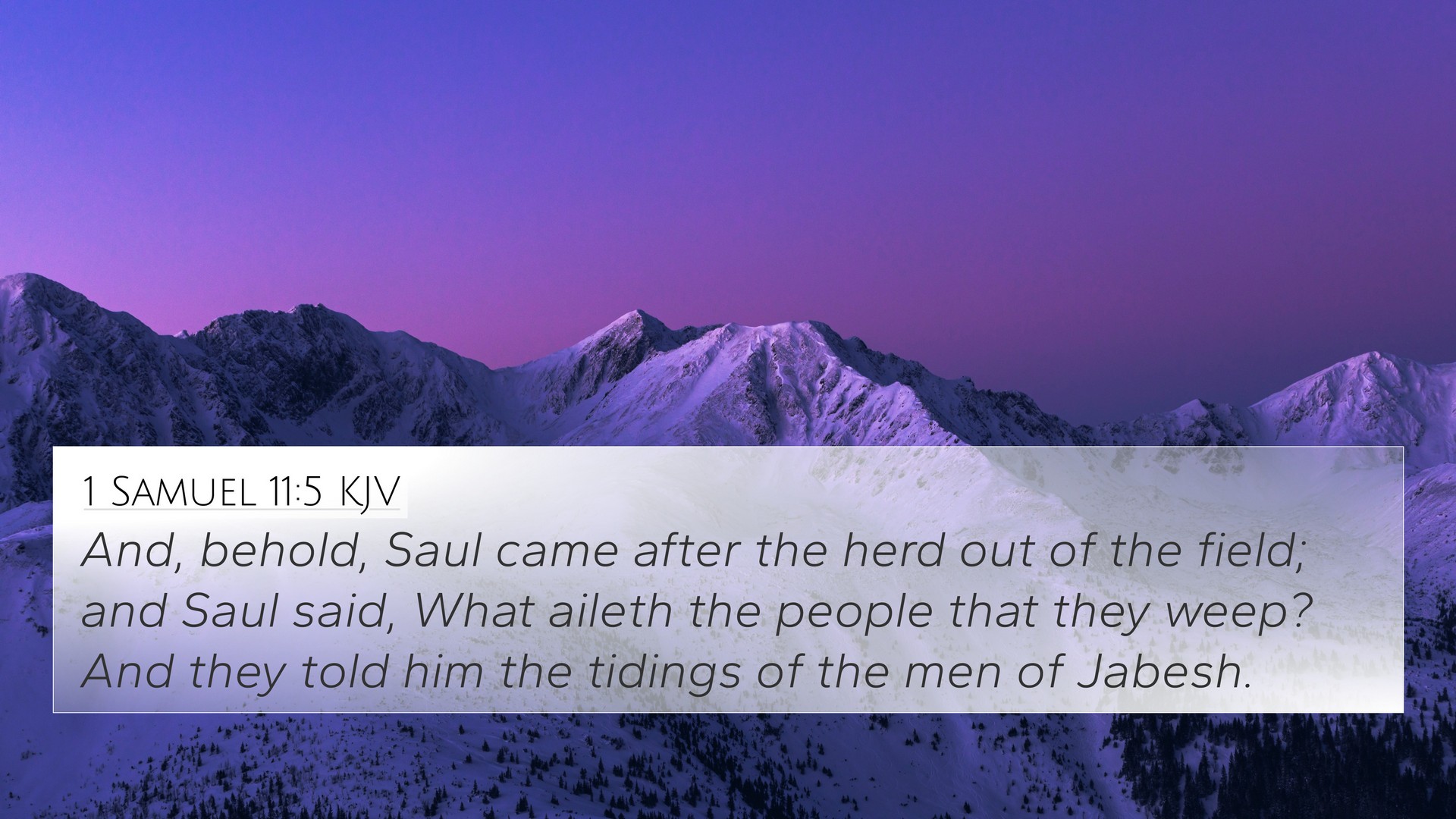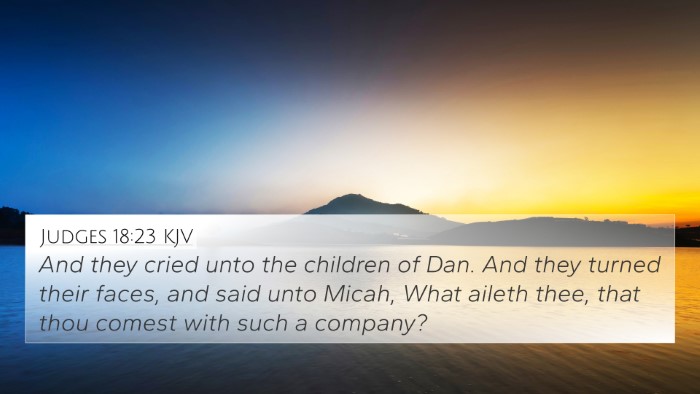Understanding 1 Samuel 11:5
Verse: 1 Samuel 11:5 - "And behold, Saul came after the herd out of the field; and Saul said, What ails the people that they weep? And they told him the tidings of the men of Jabesh."
Contextual Overview
This verse is situated in a pivotal moment of Israel's history, depicting Saul's initial rise to leadership amid a national crisis. In this passage, Saul learns about the distress faced by the city of Jabesh-Gilead, which had been threatened by the Ammonites.
Interpretation and Meaning
- Saul's Character: Matthew Henry notes that Saul's immediate concern for the people's well-being indicates a favorable quality in his character, suggesting he was not merely a self-serving leader.
- Crisis as a Catalyst: Albert Barnes emphasizes that this crisis was the catalyst for Saul's emergence as a leader. The weeping of the people reflects deep despair, which invites action from Saul.
- Role of Prophecy: Adam Clarke connects this event to the prophetic acts that establish Saul's kingship, highlighting that divine purpose is at play in these circumstances.
Thematic Connections
This verse can be understood through several key themes within Scripture:
- Leadership in Crisis: The Bible frequently presents leaders rising to meet challenges. Similar instances can be seen in Joshua succumbing to the challenges of Canaan (Joshua 1:6-9) and David's leadership during Saul's reign (1 Samuel 30:6).
- God's Providence: The situation reflects God's active involvement in guiding His people through leaders, as with Moses (Exodus 3:10) and Gideon (Judges 6:14).
- Compassion and Action: Saul’s concern for the people mirrors the compassion displayed by Jesus during His ministry (Matthew 9:36), where He sees the crowds and has compassion for them.
Cross-References
Here are some relevant cross-references linked to 1 Samuel 11:5:
- 1 Samuel 10:16: Saul's earlier hesitance indicates the struggle leaders go through when chosen.
- Judges 3:9-10: The example of Othniel shows how Israel responded to distress with a divinely appointed leader.
- Exodus 17:9: Moses raises his arms in battle—a symbol of leadership and divine intervention.
- 2 Kings 2:12: Elisha's succession of Elijah brings a parallel between leadership transitions and divine purpose.
- Acts 7:54-60: Stephen's plight and the response of the people reflect emotional distress similar to that in Jabesh-Gilead.
- Luke 4:18-19: Jesus speaks of bringing good news to the poor, demonstrating the need for leaders to respond to suffering.
- Proverbs 29:2: "When the righteous are in authority, the people rejoice," underscoring the impact good leadership has on the nation.
Tools for Cross-Referencing
Understanding the connections between Bible verses enhances theological insight. Here are some useful methods and tools:
- Bible Concordance: A reference tool that allows users to find where specific words and themes appear throughout the Bible.
- Bible Cross-Reference Guide: A resource that highlights verses that connect thematically or contextually.
- Cross-Reference Bible Study: A method for exploring thematic links and commonalities across different texts—enhancing understanding.
- Comprehensive Bible Cross-Reference Materials: Utilizing collections of cross-references assists in in-depth study and sermon preparation.
Conclusion
1 Samuel 11:5 serves as a critical lens through which to appreciate the nuances of leadership, divine intervention, and the community's response to crises in the Biblical narrative. In engaging with this verse, readers are encouraged to explore intertextual connections, allowing for a richer understanding of how scripture dialogues with itself across themes, character development, and divine providence.
Further Exploration
For further insight into Bible verses related to this theme, consider exploring the connections in Old and New Testament narratives that showcase leaders responding to crises and divine guidance throughout scripture.








